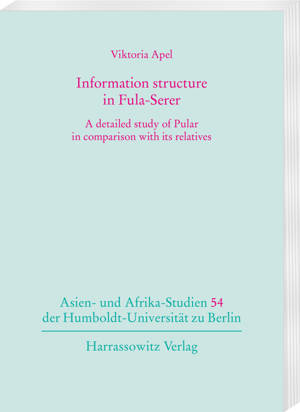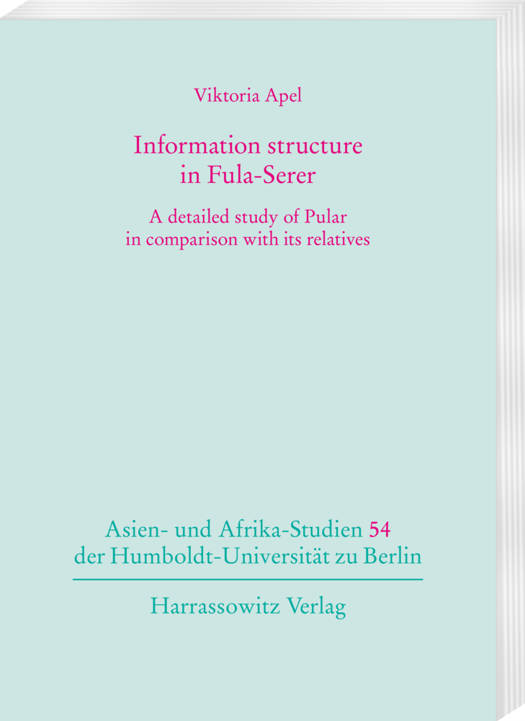
- Afhalen na 1 uur in een winkel met voorraad
- Gratis thuislevering in België vanaf € 30
- Ruim aanbod met 7 miljoen producten
- Afhalen na 1 uur in een winkel met voorraad
- Gratis thuislevering in België vanaf € 30
- Ruim aanbod met 7 miljoen producten
Information Structure in Fula-Serer
A Detailed Study of Pular in Comparison with Its Relatives
Viktoria Apel
€ 198,45
+ 396 punten
Omschrijving
How information is structured, and the formal means by which such information is encoded, differs considerably across the languages of the world. Word order, verb morphology, special particles, and prosody, these are but a few of the devices that can help the hearer to dissect information of varying degrees of importance in specific discourse contexts. The field of linguistics dedicated to the study of such devices and their pragmatic effect in discourse is called Information Structure, which in this monograph is applied to the Fula-Serer group with a particular focus on Pular, the Guinean dialect of the Fula macrolanguage. Fula is the most geographically widespread language in Africa, spoken in 18 countries, making it ideally suited for comparative studies. Operating within the functional framework, this study by Viktoria Apel provides a systematic description of different construction types in Pular with an analysis of the information-structural encoding of each. From this a number of key questions arise: how frequent are these construction types in natural discourse? Do dialectal differences exist? How comparable are the results of these analyses to what we find in Serer, Fula's genealogically closest sister language? Information structure in Fula-Serer serves to answer these and other enquiries and is supplemented by an expansive and fully linguistically annotated corpus of Pular natural discourse.
Specificaties
Betrokkenen
- Auteur(s):
- Uitgeverij:
Inhoud
- Aantal bladzijden:
- 412
- Taal:
- Engels
- Reeks:
- Reeksnummer:
- nr. 54
Eigenschappen
- Productcode (EAN):
- 9783447115308
- Verschijningsdatum:
- 5/11/2020
- Uitvoering:
- Paperback
- Formaat:
- Trade paperback (VS)
- Afmetingen:
- 170 mm x 25 mm
- Gewicht:
- 811 g

Alleen bij Standaard Boekhandel
+ 396 punten op je klantenkaart van Standaard Boekhandel
Beoordelingen
We publiceren alleen reviews die voldoen aan de voorwaarden voor reviews. Bekijk onze voorwaarden voor reviews.










